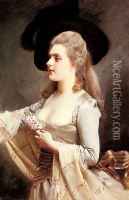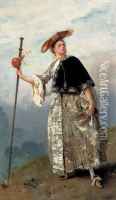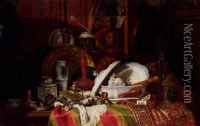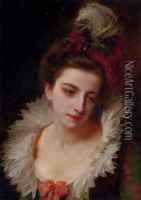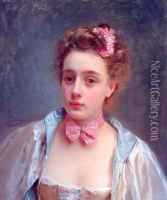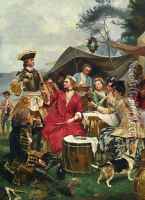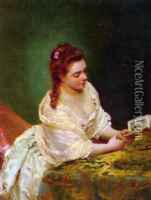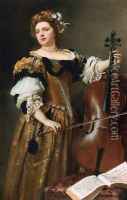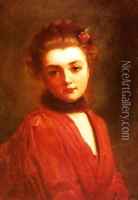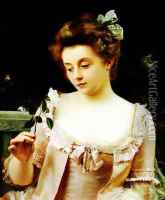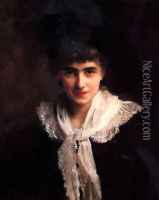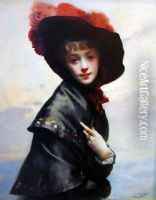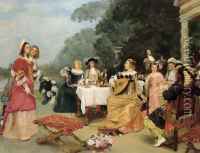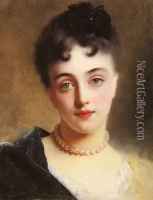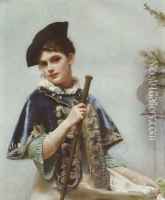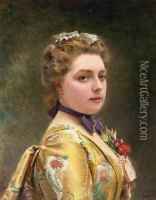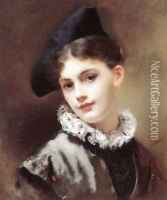Gustave Jean Jacquet Paintings
Gustave Jean Jacquet was a notable French painter, known for his portraits of beautiful women that reflect the elegance and aesthetics of the Second Empire in France. Born on May 25, 1846, in Paris, he was a student of the famous French academic artist William-Adolphe Bouguereau. Jacquet's training under Bouguereau at the École des Beaux-Arts in Paris had a significant influence on his technique and style, which is evident in the refined brushwork and realistic depiction of his subjects.
Jacquet developed a reputation for his detailed and delicate portrayal of female subjects, often dressing them in historical and fanciful costumes that added a romantic allure to his paintings. His work was characterized by a meticulous attention to fabric texture and the graceful poses of his figures, often captured in intimate or contemplative moments. Jacquet's paintings were also known for their soft color palette and smooth finish, which appealed to the tastes of the time.
He exhibited his artwork regularly at the Paris Salon, receiving high acclaim and medals for his contributions to French art. Jacquet's works were particularly popular among collectors and art patrons of the late 19th century, and he was awarded the Legion of Honor in 1879 for his artistic achievements.
Throughout his career, Jacquet remained committed to the academic style of painting, even as the art world around him began to shift towards Impressionism and other modern movements. Despite the changing trends, his portraits maintained a consistent popularity due to their beauty and craftsmanship.
Gustave Jean Jacquet's legacy is that of a master portraitist who captured the essence of his era's upper-class femininity and ideals of beauty. His paintings continue to be appreciated for their historical value and artistic quality. Jacquet passed away on July 31, 1909, leaving behind a body of work that continues to be admired by art enthusiasts and collectors.
